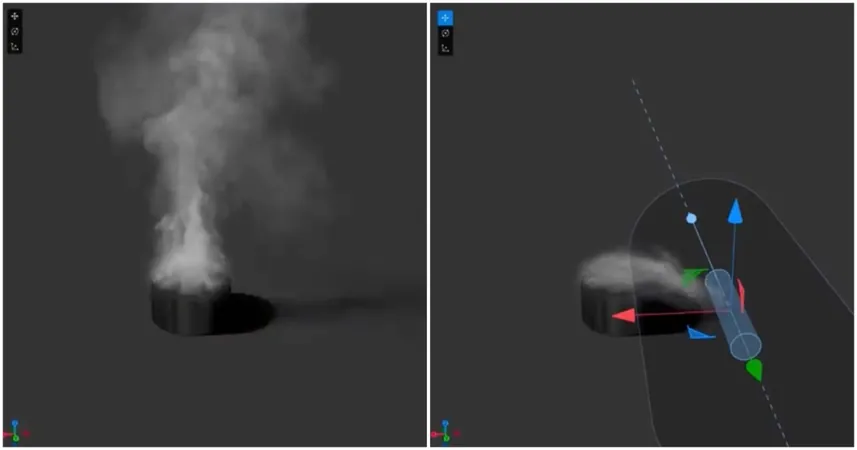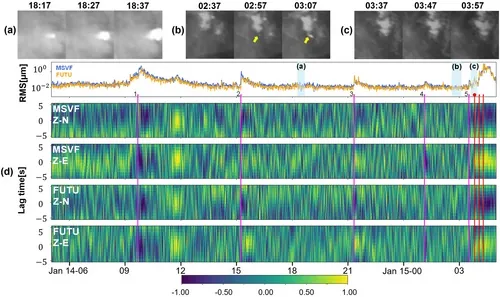
Philae's Historic Comet Landing: A Journey of Discovery and Data
2024-11-12
Author: Daniel
Philae's Historic Comet Landing: A Journey of Discovery and Data
On November 12, 2014, the European Space Agency's (ESA) Rosetta spacecraft made headlines by successfully landing its lander, Philae, on the surface of comet 67P/Churyumov-Gerasimenko. This remarkable achievement marked a monumental moment in space exploration, as it was the first time humanity had placed a probe onto a comet's surface, concluding a decade-long journey of over 500 million kilometers through our Solar System.
Finding a Landing Spot: The Countdown Begins
Rosetta reached comet 67P on August 6, 2014, and the clock was ticking to determine where Philae would set down. The team needed a site that balanced safety with scientific interest. After close examination of several candidate locations, the Agilkia site on one of the comet's lobes was chosen for its seemingly smooth surface.
However, as the landing date approached, an unexpected issue arose. Philae's active descent control system, which was essential for a smooth touchdown, could not be activated. As a result, Philae would depend solely on harpoons and ice screws to secure itself to the comet upon landing.
Touchdown: A Moment of Triumph and Surprise
Despite the challenges, Philae launched from Rosetta and commenced its seven-hour descent. Upon touchdown, the sensors on Philae registered vibrations marking the first-ever contact between a man-made object and a comet. Unfortunately, the harpoons failed to deploy, causing Philae to bounce off the comet's surface multiple times before settling down.
During its bounces, Philae collected critical data—measuring the density and composition of the comet's surface. Interestingly, initial contact revealed a soft layer before it encountered a much harder base, showcasing the varied textures that existed beneath the surface of the comet.
Philae eventually settled at a location named Abydos, making it the first human-made object to land on a 4.6 billion-year-old relic from the Solar System. Here, it conducted seismic measurements and studied temperature variations, marking the first time scientific tools measured a comet's temperature cycle.
Unprecedented Discoveries: Philae's Influx of Data
Philae's suite of scientific instruments worked tirelessly during its journey and even while bouncing across the comet. It detected a remarkable variety of organic compounds—which had never before been identified in comets—including methyl isocyanate and acetamide, suggesting the building blocks of life may be more widespread across the cosmos than previously thought.
The lander also enabled the first comprehensive study of a comet's magnetic field, providing insights into the comet's structural properties—a feat accomplished due to Rosetta’s close proximity to the comet.
Though Philae's primary mission was cut short when it entered hibernation after 64 hours, it successfully completed about 80% of its planned science goals. Meanwhile, Rosetta continued to relay invaluable information about the comet and its behavior as it orbits the Sun.
What's Next for Comet Exploration?
Philae's legacy has set the stage for future missions aimed at understanding comets and asteroids more closely. ESA announced an ambitious Comet Interceptor mission, which will target a comet passing through our Solar System for the first time, providing insight into ancient, unprocessed material from our Solar System's infancy.
Additionally, ESA's Hera mission is headed for the asteroid Dimorphos, following NASA's daring impact experiment aimed at testing planetary defense techniques. Other initiatives, such as Ramses and M-Argo, are preparing to explore near-Earth objects, further expanding humanity's quest to understand the cosmos.
Philae's historic landing has inspired a new generation of space exploration enthusiasts and scientists, prompting ongoing discussions about humanity's place in the universe. As we revisit the milestones of Philae’s journey, we continue to redefine our understanding of these ancient celestial bodies and their geological histories. Join the dialogue and relive the excitement on social media with the hashtag #CometLandingRelived.
The Rosetta and Philae missions exemplify the ingenuity and perseverance of space exploration, igniting curiosity about what secrets the universe still holds.



 Brasil (PT)
Brasil (PT)
 Canada (EN)
Canada (EN)
 Chile (ES)
Chile (ES)
 España (ES)
España (ES)
 France (FR)
France (FR)
 Hong Kong (EN)
Hong Kong (EN)
 Italia (IT)
Italia (IT)
 日本 (JA)
日本 (JA)
 Magyarország (HU)
Magyarország (HU)
 Norge (NO)
Norge (NO)
 Polska (PL)
Polska (PL)
 Schweiz (DE)
Schweiz (DE)
 Singapore (EN)
Singapore (EN)
 Sverige (SV)
Sverige (SV)
 Suomi (FI)
Suomi (FI)
 Türkiye (TR)
Türkiye (TR)